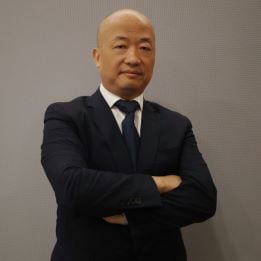

Chief Compliance Officer and Head of Legal and Compliance | China International Capital Corporation






Joe Zhou
Chief Compliance Officer and Head of Legal and Compliance | China International Capital Corporation
Team size: 240+ globally
How do you approach managing legal aspects during periods of instability or crises, and how does your legal strategy align with the broader business strategy to ensure organisational resilience?
We regularly assess risks and crises to identify potential legal issues stemming from industry instability or disruptions, allowing us to refine response protocols. This involves evaluating risks such as contract defaults, regulatory compliance challenges, and potential litigation. For example, in the case of a fat-finger error, we analyse the legal implications of potential defaults and explore available remedies.
Legal strategies should focus on real-time monitoring of regulatory changes, keeping abreast of new regulations, court rulings, and industry trends. To achieve this, we leverage on AI-driven compliance tools to quickly adapt policies, ensuring they align with evolving business objectives, while consistently tracking the legal landscape for any developments that might affect the organisation.
Our reputation could be at high risk during crises. To protect and manage this critical asset, we have worked closely with our PR team to develop carefully crafted reputation management policies and procedures. These are not merely standard guidelines; they are flexible frameworks tailored to address the unique challenges posed by different types of crises. In addition to those policies and procedures, we have also prioritized crafting crisis narratives that are legally sound and align with stakeholder expectations.
We have also established a unified e-platform for legal and compliance management, streamlining the tracking and management of contracts and regulatory filings. By consolidating these elements into a single digital environment, we have significantly reduced the risk of being unable to locate critical documents during times of instability or crises. In addition, we are leveraging advanced tools, such as predictive analytics algorithms to analyse vast data set – encompassing historical legal cases, industry trends, and internal operational data – to detect emerging risks well before they materialize into full-blown crises.
We regularly update the executive team and relevant departments on legal developments and risks through detailed reports, concise briefings, and real – time alerts when necessary. These updates are not merely one-way communications; they are followed by in-depth discussions to ensure all parties grasp the implications and can collaborate on developing effective strategies. Equally important is for the legal team to understand the business’ objectives, including their innovation plans. By engaging in conversations with department heads and key project managers, the legal team can proactively identify potential legal challenges (as well as uncover opportunities) in new business initiatives.
To help the organisation balance legal risks with business opportunities, we conduct due diligence for each potential business opportunity and evaluate the associated legal risks. Once identified, we collaborate closely with the business units to structure deals in a way that minimizes those risks. If a proposed deal carries significant non-compliance risks, we will inform the business department that the transaction cannot proceed as planned. This communication is not just a flat rejection; instead, it is an invitation to explore compliant and viable alternatives, such as modifying the deal structure or business model to seize the opportunity while managing risk effectively.
How do you see AI and automation reshaping the legal profession, and how are you leveraging technology in your own legal team?
AI and automation have significantly improved the efficiency of legal work in several ways. For example, in document management, they categorise and retrieve files with precision, reducing search times from days to minutes. They can also create standardised templates for routine legal tasks, such as drafting contracts and pleadings, minimising repetitive work. Additionally, intelligent legal research and case analysis have become common, streamlining the process of gathering and evaluating legal information.
While AI greatly enhances the efficiency of legal work and brings transformative changes to the legal profession, it can never truly replace professional legal practitioners. The limitations of AI in legal practice are multifaceted. For example, although AI excels at automating repetitive tasks such as document review and legal research, it lacks the nuanced judgment and creative problem-solving skills needed to address ethical dilemmas and craft tailored legal strategies. The future of the legal profession lies in human-AI collaboration, where AI boosts efficiency, allowing lawyers to focus on strategic, value-driven tasks. AI amplifies the lawyer’s capabilities, but it cannot displace the heart, empathy and insight that an experienced lawyer brings to the table.
We place high priority on deeply integrating cutting-edge technologies into our legal and compliance work. We have established a dedicated, dynamic tracking mechanism that continuously monitors global technological advancements and successful cases in real time. This allows us to quickly identify innovative opportunities to blend technology with legal and compliance practices, proactively adopt advanced concepts and methods, and incorporate leading technological solutions and practical insights into our internal systems. These initiatives are aimed at adapting to a rapidly evolving market and increasingly intricate legal and compliance demands.
For example, we developed and launched an in-house AI chatbot to support a global team of over 200 legal professionals. This chatbot is groundbreaking, as it redefines how lawyers access legal knowledge and internal policies / procedures, while also streaming document drafting and contract analysis. By doing so, it eliminates inefficiencies and reduces manual labour.
Our legal department implemented a centralised contract management system that redefines the way we manage contracts. This transformation eliminates the inefficiencies of traditional contract handling, replacing cumbersome manual processes with a streamlined, digital-first approach. As a result, lawyers dedicate less time to administrative tasks and more time to delivering high-value legal counsel, enhancing overall business agility.
Acknowledging the growing complexity of the global legal and regulatory landscape, we engineered and implemented Robotic Process Automation (RPA), Retrieval Augmented Generation (RAG) and Gen-AI enabled solutions to automate the monitoring of global regulatory changes and enforcement actions. By harnessing these technologies, we ensure that the organisation remains ahead of regulatory risks, fostering a culture of proactive compliance and robust risk management.
The initiatives outlined above are just the starting point and will be dynamically adjusted as needed. CICC’s legal team will continue to learn, adapt, innovate, and respond to market conditions—however benign or volatile. Through this ongoing effort, we are cultivating a team of lawyers poised to capitalise on tomorrow’s opportunities.
Chief compliance officer, head of legal and compliance | China International Capital Corporation